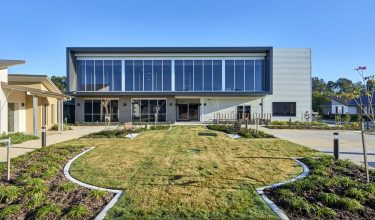
ProjectXavier Catholic College
Xavier Catholic College is a High School which caters for approximately 900 students.
The High School is located in the Headlands Estate, Skennars Head, ten minutes north of Ballina.
Construction on the first stage of the School commenced in June 1999 and the college accepted its first students in January 2000.
The Brief:
The client came to us wanting coordinated Structural and Civil Engineering Design for years 7 - 12.
Key Challenges:
The key challenges we could see for this project were the variety of building types for various school functions, budget controls and limited space
Solutions:
We overcame these challenges by undertaking detailed site planning, determining opportunities and constraints of the site, engaging with the architects and the centre senior management, and having a number of pre-DA communications with Council’s Technical Officers.
Key Features:
The multipurpose hall comprises high steel portal frames and 4.6m long tapered cantilevered concrete beams to the first floor. We have provided structural engineering design for all stages of the college including the Administration, Art, Science, GLAs, Library, Canteen, Amphitheatre and Multipurpose Hall.
APP’s Role:
Ardill Payne & Partners were responsible for the Structural and Civil Engineering Design for all stages of development of the College, including the Engineering Design of the multi-purpose hall.
Budget:
The budget for the project was $14,100,000.00.

















































































































